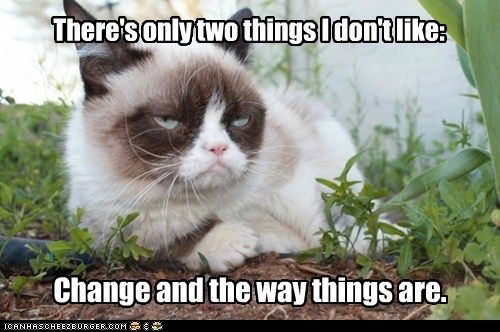
Today’s Morning Buzz is by Sarah Henricks, Management Analyst, City of South San Francisco (Twitter & LinkedIn)
What I’m watching: When They See Us
What I’m listening to: old episodes of Hidden Brain
What I’m eating: homemade blueberry muffins (my blueberry guy is done for the season)
__________________________________________________________________________________________________________
Hi! I’m Sarah Henricks, a semi-recent Bay Area transplant. I’m excited to be part of the Morning Buzz rotation! I recently started working as a Management Analyst for the Public Works Department in the City of South San Francisco, #SouthCity!, which is different than regular San Francisco. I count eating, cooking, traveling, local gov, NC State football and animals among the many things I love. I love two animals in particular – and am borderline obsessed with them – my two cats, Camille and Edward Scissorclaws. Like many parents to fur-babies and actual human babies, my camera roll is made up of about 97.98% photos of the cats sleeping, eating, and generally being cute and fuzzy. How does my very healthy enamorment with these two cats relate to local gov, you may be wondering?

Well, we recently purchased a litter robot (this is not an endorsement) which is essentially a space-aged litter box for the cats. It wasn’t cheap, it’s not small and the only thing the cats find interesting about it is the giant box it came in. But, for me, it’s an innovative piece of technology that will make our lives easier. I (and by “I”, I mean my husband) will have less work to do because this thing cleans the litter automatically and the cats have a cleaner environment to do their business. It seems like a win-win. But the cats will not use it. This got me thinking, why are cats, like cities, so scared of technology?
One of the responsibilities of my current role is to help improve the efficiency of our Public Works operations. A couple of basic efficiencies I’m looking at right now include installing automatic passenger counters (APCs) on our city shuttles, installing parking meter occupancy sensors in our downtown parking district, and using a third party vendor for parking permit fulfillment. These efficiencies could do things like cut down on staff time used to track and monitor the programs, generate additional revenue, improve enforcement and safety, and generate data that could be used for bigger goals.
The benefits sound great, much like the benefits of convincing the cats to use their new space toilet. However, embracing the technologies that would make these gains possible is scary. There are initial costs associated with technologies and some ongoing maintenance or subscription costs. They require an investment of both money and time. Staff needs to vet the technologies to ensure that they meet the needs of the current programming and potential future needs.
There is also risk associated with new tech or processes. What if something goes wrong with the APCs and we are unable to track shuttle ridership, which is necessary to maintain the grant funding that pays for 75% of the operations costs? What if community members are disrupted by a change in parking permit vendors and we start getting an influx of calls about the new system, gobbling up hours of staff time which is now spent answering questions about why we changed the process? What if the parking meter occupancy sensors we choose malfunction and we can’t monitor parking spaces and lose a bunch of revenue that we were counting on to improve parking facilities in the district? What if a cat accidentally gets trapped in the intergalactic throne?
Change can be scary for cities. And cats. To help usher in changes in service delivery, we have to be champions for that change. We have to demonstrate why the benefits outweigh the risks. We also have to have a contingency plan in place in case that tech does fail us. Oftentimes we can maintain the old system until the new one is in place and fully functioning, keeping in mind that it may require duplicate efforts on the part of our staff. We can take transitions slowly, ensuring each piece of the plan falls into place and that all stakeholders involved understand what is changing and why. We can allow time for testing and crashing new systems to get a better idea of the fallout if it happens when the system is live.
It can take time for both the public and city staff to accept and embrace change. Sometimes a champion can help generate excitement and buy-in. Showing the team how a shift will benefit them helps garner support. Unfortunately, sometimes we just have to wait until the proverbial (or literal in the cats’ case) crap piles up and the problem gets so bad that change is the only answer and the team is as eager as we are to find a solution to the problem. For South City, the team is generally supportive of technology-based improvements, which is great for me! They understand that we have to assume some risk to innovate and problem solve. Sadly, the cats appear to be in the “wait for the problem to build up before embracing the new tech” boat, which is not so great for me.

How does your city seem to feel about technology and innovation? What are your strategies for convincing your teams to embrace change? How should I get the cats to use the planetary potty?
